
Author: Julie Nuttall
19th June – Disruption to Watling St Road surgery
Due to electricity supply disruption, no vets or nurses will be working at our Watling St Road surgery on Tuesday 19th June.
Our phone lines will be open as usual 01772 700671
Should you need a vet, our other surgeries are open as usual. Please click here for their location and opening times.
Kirkham branch closed Saturday 9th June
Please be aware that on Saturday 9th June 2018 or Kirkham surgery will be closed due to the Kirkham Club Day happening in the town.
If you need to see a vet on Saturday, our Conway Drive (Fulwood) branch will be open – please click here for opening times
Is your pet travel ready?
As holiday season begins it’s important to check that your pet is travel ready if you plan to take them abroad this summer.
If you wish to travel outside the UK with your pet, the legal requirements vary depending on the other country involved, so you’ll need to check the Defra website for full information: https://www.gov.uk/take-pet-abroad/overview.
It’s also a good idea to check with your travel company to see if they:
- will accept your pet for travel – and how many they’ll accept if you have more than one
- need any proof that your pet is fit and healthy to travel, for example a letter from a vet or certain information in your pet passport
Remember to leave enough time to get all the necessary treatment and paper work in order before you travel. Pet passports are available from our surgeries to allow cats, dogs and ferrets to travel between listed countries without quarantine.
- Book an appointment with your vet well in advance of travel to get started on the right medication at the right time
- Check rabies vaccination and pet passport are up to date
- Ensure microchip is working and reading correctly
- Speak to your vet about preventive treatment needed to protect your dog against ticks, sandflies, heartworm and tapeworm
- Talk to your vet if going somewhere hot to discuss prevention of heatstroke and how to recognise signs of the problem in your dog.
Please contact your Oakhill Veterinary Centre to make an appointment or for further information.
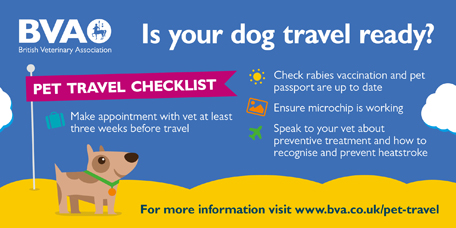
£10 OFF EQUITOP MYOPLAST OFFER IS BACK
During June 2018, you can claim £10 OFF a 1.5kg tub of Equitop Myoplast.
Simply click here to download your voucher and present it at the Oakhill practice when purchasing a 1 x 1.5kg tub of Equitop Myoplast between 1st – 30th June 2018.
Equitop Myoplast® is a unique and natural supplement for horses, packed with 18 key amino acids including 9 essential amino acids. The blend of amino acids in Equitop Myoplast provides the building blocks for efficient lean muscle growth without horses becoming ‘fizzy’ or bulking up on fats and oils.
Terms and conditions on voucher
HEAT STRESS IN DOGS
Overheating and heat stress can be a killer so here are some tips to help your dog have a happy and healthy summer.
SYMPTOMS:
- Panting excessively
- Drooling
- Increase in heart rate
- Reddened/purple gums
- Vomiting and Diarrhoea
- Seizures progressing to coma and even death.
TREATMENT:
As soon as possible move your pet to a cooler spot, keep them as quiet and calm as possible. Use wet cool towels to gradually lower the temperature and use a fan if possible. Contact your vet as soon as possible as serious complications may result.
PREVENTION:
- Exercise your dog early morning/late evening to avoid the midday sun.
- Ensure access to shade in the garden you could even supply a paddling pool!
- Have fresh cool water available, put ice -cubes in the water if taking some out with you.
- Be extra careful with either very young or old, overweight or longhaired animals. Some breeds are more likely to suffer including short-nosed breeds such as boxers and pugs etc.
- NEVER leave your pet in a parked car even on overcast days the temperature can increase dramatically.
- Clip longhaired breeds.
- Use a fan in the rooms where you pet likes to settle.
Exciting developments at our Goosnargh branch
Our Goosnargh branch has some exciting developments being carried out over the coming weeks. Thank you for bearing with us!
As always, the care of your pets remains our priority.
Our exciting developments will provide enhanced facilities, including new dedicated reception areas and consultation rooms, along with a brand new dispensary.
If you’d like to know more, please ask a member of the Oakhill Team.
Farm Vet Andy goes state side!
 In January, I headed over to Indiana, Indianapolis as part of a trip organised by Elanco to visit some dairy farms in the surrounding area. 6 vets and 6 farmers from across the UK attended, visiting 7 dairy farms followed by a day of lectures at Elanco HQ covering dairy economics and the American dairy industry.
In January, I headed over to Indiana, Indianapolis as part of a trip organised by Elanco to visit some dairy farms in the surrounding area. 6 vets and 6 farmers from across the UK attended, visiting 7 dairy farms followed by a day of lectures at Elanco HQ covering dairy economics and the American dairy industry.
We saw a variety of farms during the week from 250 cows to 15,000 spread over 5 adjacent farms, 
though most were around 1200 cows. Rainfall was similar to Lancashire with farms receiving 60” rain a year but had temperatures of 35+°C to deal with in summer. All units milked 3 times a day and yields varied from 36-43 kg/day. Nutrition obviously played a role in this yield, diets were very consistent; maize and alfalfa based. However, all farmers cited improvements to cow comfort as the major reason for increase in yield and this had become central to any decisions made to the cow environment, in one case they had improved from 30 to 40kg by moving into a new cow building and onto sand bedding.
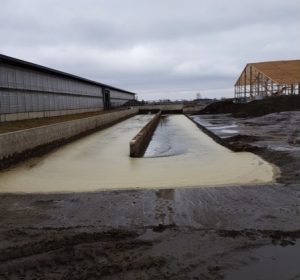 However, increasing stocking density on one farm to 110% to prepare for expansion had reduced yield by 3kg/cow. Sand was the predominant bedding system and was reclaimed using a sand lane system where the slurry was effectively washed repeatedly in a channel, the gradient of the channel meant that the sand settled out and could be removed before being reused after around 6 weeks.
However, increasing stocking density on one farm to 110% to prepare for expansion had reduced yield by 3kg/cow. Sand was the predominant bedding system and was reclaimed using a sand lane system where the slurry was effectively washed repeatedly in a channel, the gradient of the channel meant that the sand settled out and could be removed before being reused after around 6 weeks.
 Did you know?
Did you know?
There are currently 9.4 million dairy cows in the US with 1.8 million in California, average herd size is 232 with smaller farms found on the east coast where farming would be more similar to the UK. By 2025 50% of milk production is expected to come from farms >1000 cows. Average yield is predicted to increase by 1.9%/year for the next 10 years mainly from technological advances. The liquid market in the US is in slight decline but the market is mainly thought to be driven by cheese squares for burgers!
All farms had cooling systems for the cows consisting of fans and soakers, often in the UK we only think of  temperatures getting hot enough to use these systems for a few days in the summer. However, fans switched on at 15-18°C and soakers at 21°C, with farmers reporting a clear benefit at these temperatures.
temperatures getting hot enough to use these systems for a few days in the summer. However, fans switched on at 15-18°C and soakers at 21°C, with farmers reporting a clear benefit at these temperatures.
Whilst we don’t see the extreme heat where these systems really benefit cows, we certainly have many days high teens/early 20’s and we often see fertility dropping off across the practice during these periods.
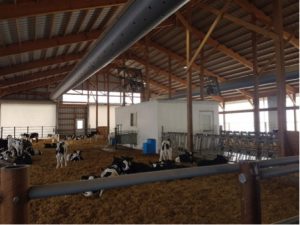 During the trip we had the opportunity to visit a large robot farm, 36 robots housed under one roof! The cows were grouped in 180’s with 3 robots to each group, averaging 36kg/day. The shed was ventilated using 100 fans situated down one side of the shed drawing air through. The unit cost roughly $7000/stall to build and he plans to install another 12 robots in the next few years. The calf rearing part of the enterprise was even more impressive. Calves were reared in groups of 60 on automatic feeders and used whole milk with a protein supplement, at 3 weeks they were drinking 13 litres on average and were 120kg bodyweight at 9 weeks of age.
During the trip we had the opportunity to visit a large robot farm, 36 robots housed under one roof! The cows were grouped in 180’s with 3 robots to each group, averaging 36kg/day. The shed was ventilated using 100 fans situated down one side of the shed drawing air through. The unit cost roughly $7000/stall to build and he plans to install another 12 robots in the next few years. The calf rearing part of the enterprise was even more impressive. Calves were reared in groups of 60 on automatic feeders and used whole milk with a protein supplement, at 3 weeks they were drinking 13 litres on average and were 120kg bodyweight at 9 weeks of age.
Control of disease was helped by only having a 5 day spread of age in the groups. Heifers calved at 21 months at 535kg.
Most farms had heifers reared off farm from a few months of age to allow them to utilise the farm for more cows, one farm sent calves 1200 miles to Texas at 3 days old for rearing. A strong emphasis on all farms was also placed on fertility and heifer rearing. Preg rate was the main metric used to monitor performance with farms all aiming for 20%+. Good fertility and calf performance allowed farms to more selective with culling and have a more productive/profitable herd, cull rates ran at 35-40%. Attention to detail set the better farms apart with each process on farm assessed to see if there was a more efficient way.
One interesting feature on the largest farm Fair Oaks was the visitor centre, attracting 600,000 visitors a year, as part of the farm tour they had a glass fronted calving gallery where there was always a cow calving visitors could watch!
The main message from the American producers was improving cow comfort and the cow environment had been the main factor in improving production and animal health.
The other key thing that I took away from the trip was that aggressive fertility management improved farm profitability through more efficient milk production.
Andy Bramall
Oakhill Farm Vet
Sweep – Ovarian Cysts

Sweep was presented to us for investigation of severe abdominal enlargement which was being caused by her large ovarian cysts.
Ovarian cysts are very common in middle-aged to older female guinea pigs and can cause problems such as pain, inappetence, interference with mobility and hair loss. Sweep did not have hair loss with her cysts and she continued to eat well, but they were so large that they were taking up a lot of space in her abdomen and causing her to have difficulty moving around.
Hormonal treatments had been tried for Sweep in the past with limited success and it was advised that she be spayed in order to definitively treat the condition and prevent recurrence. Spaying involves removal of both ovaries and the uterus under anaesthesia. Because Sweep’s cysts were very large, they had to be drained before the ovaries could be removed!
Sweep recovered very well following her operation and was soon back at home with her friends and her very dedicated owners, who report a significant improvement in her movement and activity. She was a perfect patient (especially when veggies were involved!) and it was a pleasure to look after her during her stay in the clinic and at her check-ups.
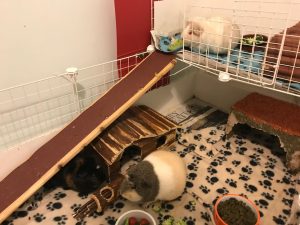
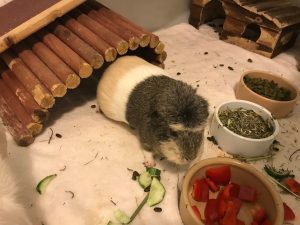
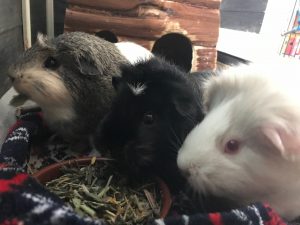


Keeping your pets safe this Easter
After a long cold winter this year, spring definitely can’t come soon enough. But as we look forward to the longer days and the warmer months, it’s important to remember that spring can bring some unwanted danger to our pets.
Easter
With bank holidays, chocolates and hopefully warmer weather, Easter is often a good time to relax. For people with dogs, this time of year is also great for long walks, but Easter can be potentially more dangerous to dogs due to the amount of chocolate involved.
Dogs like to get their paws on any food in sight, and unfortunately chocolate is one of these foods. However chocolate is toxic to our dogs. Dogs should never be given chocolate, or have access to any, this includes those hidden gems on a Easter egg hunt.
If you set up an Easter egg hunt for your children in your home or garden, make sure that you know where they’re all hidden. It’s easy to hide lots of eggs and forget about where some of them are hidden, but your dogs nose will find them easy enough. If possible, places all chocolates and eggs on the Easter egg hunt in Tupperware or boxes to prevent your dog finding them before the kids.
It’s not just the chocolate eggs that you should keep an eye on either! Boiled eggs can cause an upset stomach and constipation in your pet, especially if they eat the shells as well. If a dog consumes an egg whole, surgery may be needed to keep it from blocking the intestinal tract.
Plastic eggs pose as serious risk as well, mainly because if consumed they can’t be digested. While it may be possible for it to pass through the digestive system, it can also get stuck and cause damage requiring surgery.
Flowers
Daffodils are usually a great indication that spring has finally arrived as they’re prolific around spring / Easter time.
While dogs don’t usually pay attention to them, the bulbs of the Daffodil can be toxic if ingested. This is important if your dog likes to dig around the garden and uproot your flower garden.
Lilies are very popular around Easter, however every part of the lily is highly toxic to pets especially cats. Easter lilies and other lilies can be toxic to cats, causing kidney failure and death. All parts of the lily can be toxic, and eating just one leaf can result in severe poisoning. If you think your cat has eaten a lily, contact your vet immediately.
Other foods
Chocolate isn’t the only food your dog needs to avoid, other popular Easter food like Simnel cake and other Easter cakes / food like Hot Cross Buns usually contain raisins and sultanas, both of which are toxic to dogs, along with other products of the grape family. Therefore, do not let your dog have a bite of these foods as a treat.
Synthetic grass
Easter grass, like holiday tinsel, can be tempting to pets and dangerous if ingested causing intestinal trouble. The long, thin strings can cause “intussusception”, a bunching-up of the intestines, which requires surgery.

